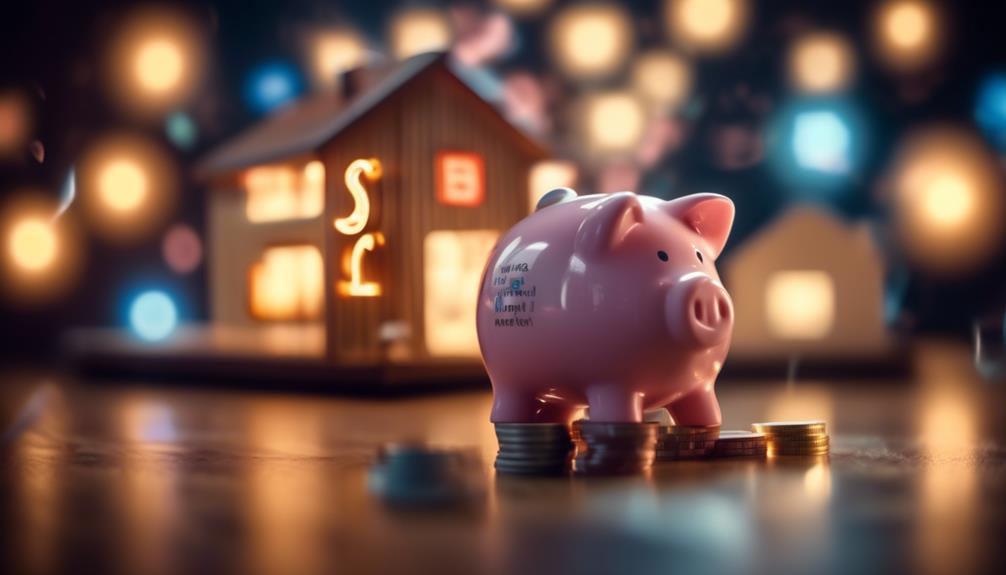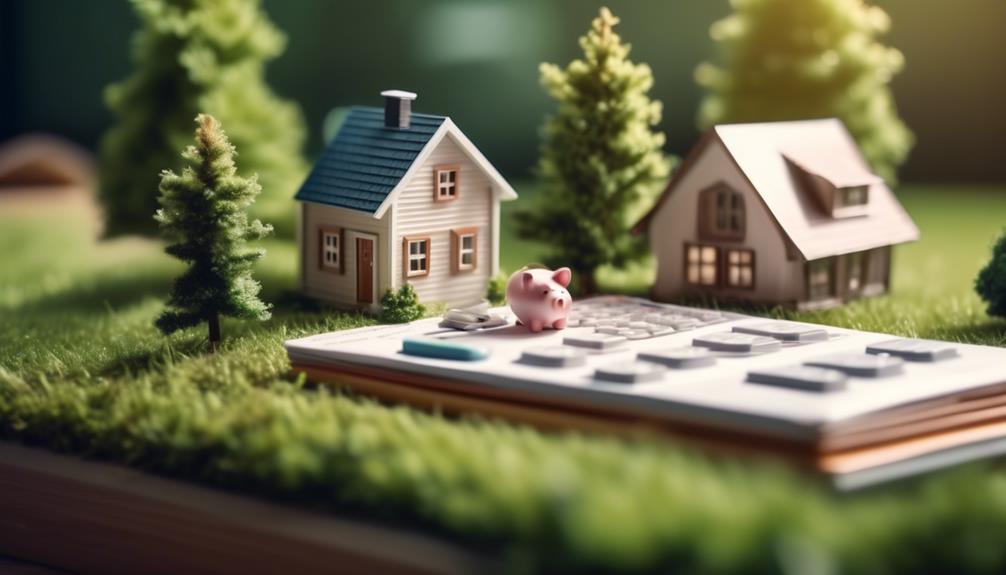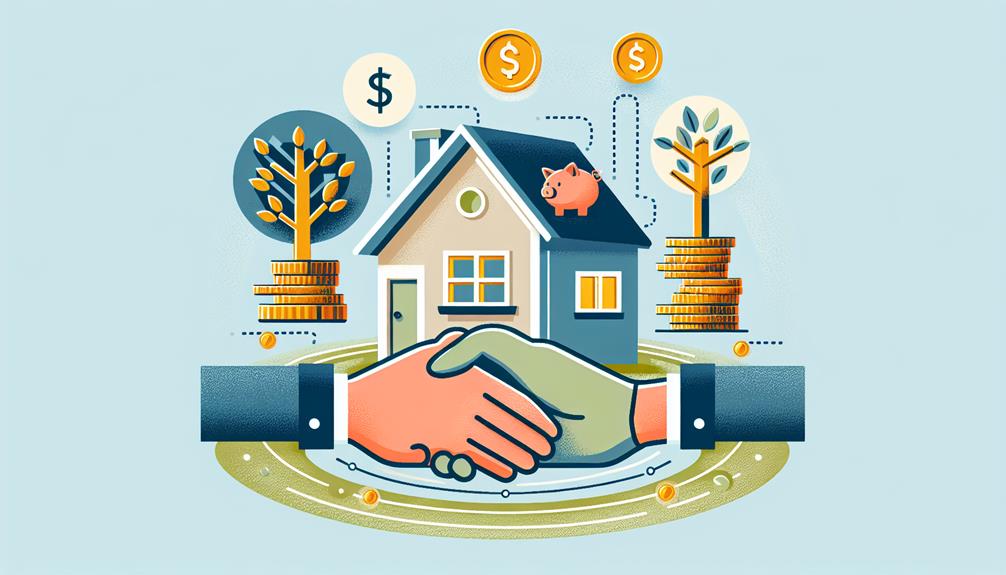Just as you're considering joining the tiny home movement, you find yourself confronting the reality of financing this lifestyle change. You're not alone in your quest to navigate the varied and sometimes complex options available for funding a smaller living space.
Traditional mortgages, which often require the home to be affixed to a permanent foundation, may not always recognize your tiny home as eligible collateral. Therefore, you'll need to explore other routes, such as personal loans, RV loans if your tiny house is on wheels, or even builder financing, each with its own set of pros and cons.
As you weigh these alternatives, it's crucial to consider factors like interest rates, loan terms, and down payment requirements. Keep in mind that the right financing choice can significantly impact your financial health and the sustainability of your tiny home lifestyle.
With a thorough understanding of the financial landscape and a strategic approach, you'll be poised to make an informed decision that aligns with your goals and budget.
Key Takeaways
- Costs for tiny homes can vary greatly, ranging from a few thousand dollars to over $100,000.
- Traditional mortgages may not be suitable for financing a tiny home due to minimum loan amounts, square footage requirements, and unconventional loan terms.
- Personal loans offer an alternative for financing a tiny home, with flexible repayment terms and options for various credit profiles.
- Alternative financing avenues such as builder financing and RV loans can provide streamlined solutions for financing a tiny home, with competitive rates and flexibility for unconventional homes.
Understanding Tiny House Costs
When considering the leap into tiny home living, you'll find that costs can vary dramatically, from as little as a few thousand dollars to upwards of $100,000, depending on your chosen path to ownership. If you're building it yourself, materials alone can set you back $14,000 to $54,000. Engaging expert builders raises the bar, with homes costing between $85,000 to $125,000. Alternatively, prefab tiny homes run from $40,000 to well over $100,000.
Navigating these expenses requires savvy tiny home financing strategies. Securing a traditional mortgage may be challenging due to unconventional loan terms. Exploring financing options like credit unions, which may offer more favorable interest rates, or a home equity loan if you're already a homeowner, could be advantageous. Your credit score will significantly influence your monthly payments, so it's crucial to prepare financially.
Traditional Mortgage Challenges
While understanding tiny house costs is essential, securing a traditional mortgage for such a home often presents unique challenges. Traditional mortgage loans typically aren't available for tiny houses due to minimum loan amounts and specific square footage requirements. Lenders frequently mandate that a tiny home be on a permanent foundation to qualify for a mortgage, further complicating the process.
Moreover, many traditional homes meet the criteria for conventional mortgage loans, while the unique nature of tiny homes means they often do not. In addition, tiny houses may not be recognized by the Recreation Vehicle Industry Association (RVIA), leading to higher interest rates and tougher credit score requirements.
You'll also need to consider closing costs, which can be relatively high compared to the loan amount.
Personal Loan Prospects

Exploring personal loans offers a viable alternative for financing your tiny home. However, it's important to consider the higher interest rates and shorter repayment terms that accompany these unsecured loans. Your credit score plays a pivotal role, with the annual percentage rate (APR) ranging from as low as 3% to as high as 36%, significantly impacting your monthly payments and overall financial strategy.
Here are some key considerations:
- Repayment Flexibility: Personal loan terms can extend up to 7 years, offering a degree of flexibility.
- Credit Variability: Lenders offer options for various credit profiles, including bad credit personal loans.
- Loan Application Process: It's streamlined compared to traditional mortgages, which can make personal loans a faster route to finance a tiny home or recreational vehicles.
Research thoroughly to ensure this personal finance option aligns with your objectives.
Alternative Financing Avenues
If you're looking beyond personal loans to finance your tiny home, several alternative avenues may suit your needs, including builder financing and RV loans for homes on wheels. Builder financing can be a streamlined solution, especially if you're working with a contractor who understands your vision and the importance of reducing your environmental footprint.
On the other hand, RV loans might be an ideal option if your tiny home is portable and meets the Recreation Vehicle Industry Association (RVIA) standards. These loan products often offer competitive rates, unlike bad credit personal loans or high-interest credit cards.
While a traditional mortgage mightn't fit the unconventional nature of tiny living, these alternative financing options provide flexibility to help you achieve your minimalist homeownership dreams without compromising on innovation.
Preparing for the Purchase

Having considered alternative financing avenues, you should now focus on the practical steps involved in preparing for your tiny home purchase. Here's a concise guide to set you on the right path:
- Evaluate Land and Zoning: Determine if you need to purchase land and research local zoning regulations that could impact the placement of your tiny home.
- Assess Total Costs: Besides the cost of your tiny home, include potential expenses for land, utilities, and customization to understand your overall budget needs.
- Financial Readiness: Review your credit score and consider personal loans or tiny home loans that suit your financial situation. Even if you're seeking tiny home financing with bad credit, there are lenders who offer bad credit options, although terms may vary.
Prepare for the purchase with a clear financial strategy to enjoy your innovative living space.
Navigating Zoning and Legality
Before you commit to a tiny home, you'll need to navigate the local zoning laws that dictate where and how you can live in your new space. Identifying the legal placement strategies for your tiny home, whether it's on wheels or a permanent foundation, is essential to ensure you're within the law.
Ensuring compliance with local codes is crucial not only to avoid fines but also to guarantee the safety and legality of your tiny home.
Understanding Zoning Laws
To successfully finance your tiny home, you'll need to thoroughly understand and comply with the zoning laws that govern the land you're interested in. These regulations can significantly influence whether you can place a tiny home on your chosen lot. Here are key points to consider:
- Confirm Zoning Compatibility: Ensure the land is zoned for your intended use—be it a mobile home, an RVIA certified tiny house, or a traditional real estate structure.
- Assess Land Requirements: Home buyers need land to build, but remember, some areas may have restrictions on minimum square footage or may not allow tiny homes to permanently reside on a lot and never move.
- Explore Loan Options: While some lenders offer RV loan financing for movable tiny homes, land mortgages for fixed tiny homes typically need a 20% down payment.
Legal Placement Strategies
Often, the first step in legally placing your tiny home is to gain a comprehensive understanding of the local zoning regulations that will affect your build. You can't park your tiny house just anywhere; it's vital to consult with zoning officials or seek legal advice to ensure compliance. Consider an RVIA-certified tiny home to qualify for an RV designation, making it easier to find a legal spot. Research the available utilities and Resale Value implications as well. Here's a quick guide:
| Strategy | Benefit |
|---|---|
| Consult Zoning Officials | Avoid legal issues, ensure compliance |
| RVIA Certification | Easier placement in RV parks |
| Placing in a Tiny Home Community | Simplified legality, community support |
| Research Local Utilities | Ensure the availability of essential services |
| Understand Resale Value | Protect your investment |
Compliance With Local Codes
Navigating the maze of local zoning codes is a critical step in ensuring your tiny home complies with legal requirements and avoids future legal entanglements. Here's what you need to focus on:
- Local Codes and Building Codes: Check if your tiny home meets the local codes, which often stipulate minimum square footage and requirements for a permanent foundation.
- RVIA Certification: For tiny homes on wheels, obtaining RVIA (Recreational Vehicle Industry Association) certification can help in meeting the standards set by the Transportations National Highway Traffic Safety Administration.
- Zoning Regulations: Research zoning regulations in your desired area to ensure they permit tiny homes. Some areas may have more flexible codes, recognizing tiny homes as an innovative alternative to traditional housing, especially for those aiming to reduce their environmental footprint over an extended period of time.
Frequently Asked Questions
Is It Hard to Finance a Tiny Home?
Yes, financing a tiny home can be tough due to lending obstacles, like zoning challenges and asset collateralization. You'll explore alternative financing, personal loans, or RV classification, all impacting loan terms and resale value.
How Much Would a Monthly Payment Be on a Tiny Home?
Your monthly tiny home payment depends on loan terms, interest rates, and the principal balance. Use payment calculators to align with your monthly budget and consider affordability factors for smart financing strategies.
What Credit Score Needed to Finance Tiny Home?
What's your number? To finance a tiny home, lenders weigh credit scores, debt-to-income, and other credit factors. Aim high for better loan types and interest rates, and always prioritize credit improvement in your financial planning.
Can You Put a Down Payment on a Tiny House?
Yes, you can make a down payment on a tiny house, which may improve lending terms. Consider saving strategies, exploring alternative financing, lease-to-own options, crowdfunding, or seeking investment partnerships for more flexible solutions.
Conclusion
You might worry about the red tape, but don't let that dampen your tiny home dreams. With a bit of savvy and the right lender, you'll find a financing option that suits your budget and lifestyle.
Remember, whether it's a personal loan or an alternative method, there's a solution out there. Invest in your tiny home wisely, and soon you'll be reveling in the joys of affordable, sustainable living.
It's not just a space; it's your new life chapter.

